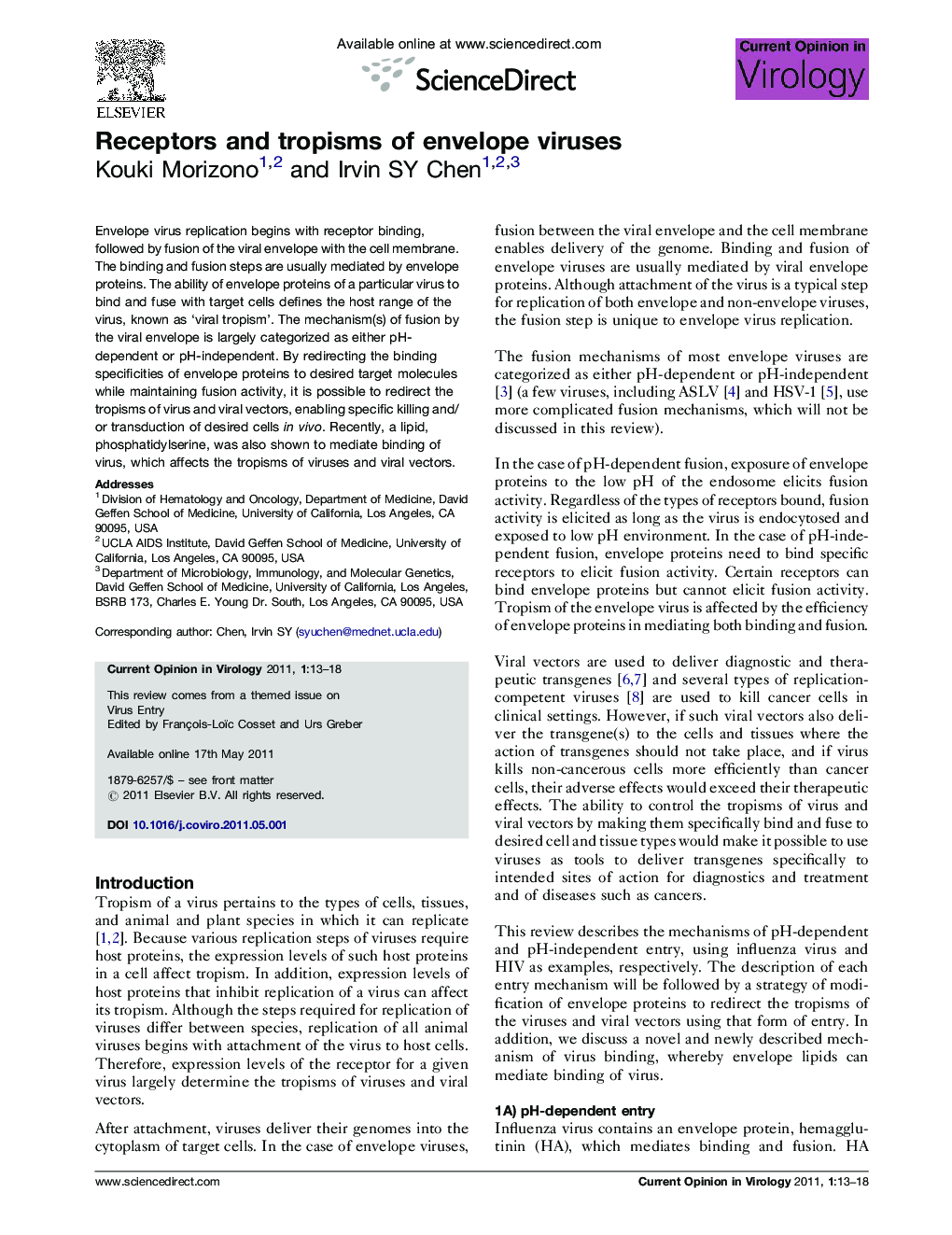| Article ID | Journal | Published Year | Pages | File Type |
|---|---|---|---|---|
| 2473478 | Current Opinion in Virology | 2011 | 6 Pages |
Envelope virus replication begins with receptor binding, followed by fusion of the viral envelope with the cell membrane. The binding and fusion steps are usually mediated by envelope proteins. The ability of envelope proteins of a particular virus to bind and fuse with target cells defines the host range of the virus, known as ‘viral tropism’. The mechanism(s) of fusion by the viral envelope is largely categorized as either pH-dependent or pH-independent. By redirecting the binding specificities of envelope proteins to desired target molecules while maintaining fusion activity, it is possible to redirect the tropisms of virus and viral vectors, enabling specific killing and/or transduction of desired cells in vivo. Recently, a lipid, phosphatidylserine, was also shown to mediate binding of virus, which affects the tropisms of viruses and viral vectors.
► Receptors for envelope viruses mediate binding and fusion of virus. ► The fusion step is mediated in either a pH-dependent or pH-independent manner. ► Viral tropism can be determined by expression levels of viral receptors on target cells. ► The tropisms of viruses can be changed by modifying their receptor-binding specificity. ► The envelope lipid, phosphatidylserine, can mediate binding of virus.
